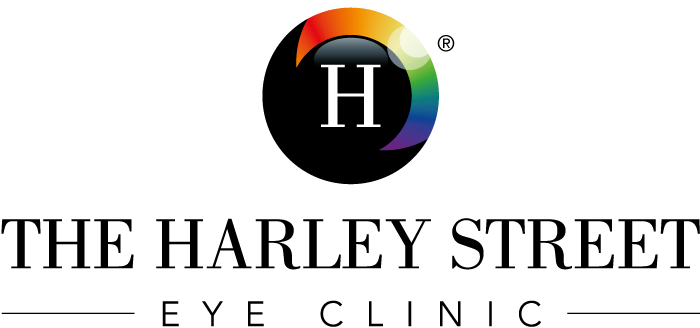Cataract treatment
Cataracts can be treated safely, simply and effectively. It is important to treat cataracts not only to improve your quality of life but to prevent serious worsening of your eyesight.
Cataract eye surgery is a quick and easy solution and the benefits are life changing. You will once again see the world in vibrant colours and vivid details. You will be free to play with grandchildren, pursue your hobbies and just get on with life as normal.
At The Harley Street Eye Clinic, we offer both conventional cataract surgery and the latest advance known as femtosecond laser cataract removal. We are one of the country’s few clinics to provide this state-of-the-art treatment.
How are cataracts treated?
The Harley Street Eye Clinic, offers the very latest of techniques for treating cataracts, including femtosecond laser cataract removal and sophisticated biometrical assessment technology allowing us to implant lenses tailored to your visual needs. We also perform conventional surgical cataract removal.
Femtosecond laser cataract removal
The Harley Street Eye Clinic, is proud to be one of the few centres in the UK to offer a groundbreaking procedure called femtosecond laser-assisted cataract surgery. With no need for blades to remove the cataract, no need for sutures to stitch the eye up afterwards, and no need for needles to inject anaesthetic, it is the greatest advance in the field of cataract eye surgery in over 20 years. Offering extreme precision and safer, more consistent results, femtosecond laser cataract removal is at least a decade ahead of the procedures offered by many other centres.
The procedure
Femtosecond laser-assisted cataract surgery uses a laser to produce a highly accurate and repeatable incision. The cataract is divided with a level of precision difficult to achieve by conventional surgical methods. This procedure is also safer, faster (half the time), as well as being associated with a quicker recovery compared to conventional surgery. The laser will also allow accurate correction of astigmatism, a problem with focussing found in some patients. This further improves the outcome of the procedure.
Micro-incision cataract surgery
The procedure
At The Harley Street Eye Clinic, we specialise in this procedure too. It involves a tiny 1.8mm incision in order to remove and replace the lens. No stitches are needed, and you will be able to continue with normal day-to-day activities soon after the procedure. Recent advances in cataract eye surgery mean that micro-incision cataract surgery is a painless experience. Most procedures can also be performed as day cases. At The Harley Street Eye Clinic, we employ two types of anaesthetic:
- Topical anaesthesia – no needles required. Instead, a simple eye drop numbs the eye before surgery. No eye patch is needed and you can usually notice improvements in your vision straight after surgery.
- Regional anaesthesia – a small injection is made into the tissue around your eye. You will need an eye patch for a few hours, and most people will see improvements in their vision the following day.
Topical anaesthesia is our preferred method at The Harley Street Eye Clinic.
What type of replacement lens is implanted after cataract treatment?
After a cataract is removed, an artificial lens is implanted. Whilst some eye clinics use a one-size-fits-all approach to lens selection, at The Harley Street Eye Clinic we implant the latest proven lens tailored to your needs. A range of options is available and we will discuss which is most suitable for you, bearing in mind the requirements of your lifestyle and the specific biometric measurements of your eye, which vary from patient to patient. Lenses available at The Harley Street Eye Clinic include:
- Premium monofocal lens implant: You may still need to use glasses for reading after surgery. This lens performs well due to a highly specific focus at the distance chosen by the patient. The monofocal lens features aspheric technology that reduces glare, and at The Harley Street Eye Clinic, our monofocal lenses have an ultraviolet light filter too, which may protect the retina and macula from harmful rays of light.
- Multifocal lens implant: there are many companies producing their own versions of this technology, but here at The Harley Street Eye Clinic we choose our lenses according to the latest research studies including published patient satisfaction studies. These options are:
- The Carl Zeiss tri-focal lens has been shown to perform well for distant, intermediate and near vision providing a range of focus for activities typical of daily life including driving, lap top work, reading print, reading music, or drawing and painting.
- TECNIS® symfony lens: this is the latest form of true multifocal lens technology with multiple focal points.
The choice of lens depends on the needs of the individual, for example computer work, use of a tablet screens, reading music, and near vision reading. We also consider the lighting conditions of the environment in which you carry out these activities; the lenses perform differently in dim or bright light.

What are multifocal lenses?
Multifocal intraocular (implant) lenses have areas with different focusing powers allowing both near and distant objects to be seen clearly. They reduce the need for glasses, with around 80-90% of people free from glasses entirely, and 5-10% requiring glasses for reading close fine text.
Which patients are suitable for multifocal lenses?
Multifocal lenses are a viable option for people who have cataracts in both eyes and are free of any other eye diseases. They can also be suitable for people who have naturally clear lenses as an option for treating short-sightedness (myopia), long-sightedness (hypermetropia or hyperopia), as well as for the aging eye that affects near-vision and the ability to read (presbyopia). Together, the technology involved in treating the above conditions is known as Refractive Lens Exchange or Clear Lens Extraction using a multifocal lens implant. This surgery treats refractive errors (myopia, hypermetropia and presbyopia). This procedure, also referred to as Clarivu (the Optegra brand name for Refractive Lens Exchange package), negates the need for laser refractive surgery (LASIK surgery). By carrying out removal of the natural crystalline lens and improving the eye’s focus with the new implant, the procedure achieves the same as cataract surgery but it is performed before a cataract has developed or matured. We can discuss your suitability for multifocal lenses with you directly.
How do multifocal lenses work?
What drawbacks or side effects can be experienced with multifocal lenses?
Vision is as crisp and clear with multifocal lenses as with monofocal lenses, but the difference is noted in conditions of dim-light. Multifocal lenses may also cause halos or glare around lights at night, for example, from oncoming car headlights. With the older generation of multifocal lenses, around 10% of patients notice the halo/glare, but with newer multifocal lenses, this figure is reduced to around 5%. Even if this is an issue for a patient, if the right choice of lens is made at the beginning of the treatment plan then most patients are very happy with their end result.
What are toric lenses?
- A premium toric monofocal lens: This has an additional correction for astigmatism (irregular surface of the eye, similar to a rugby ball shape as opposed to a round football). This misshapen surface can create a sense of vision that is out of focus or at least not completely sharp. A toric lens corrects for this irregularity. The use of a toric lens depends on the specific biometric measurements of your eye. Many patients are suitable for a toric lens implant but in some cases the astigmatism is too small or too negligible for this type of lens and the risk involved by nature of the implantation procedure is not worth taking. This risk is associated with aligning the lens with the irregular surface of the eye and in some cases, a toric lens can rotate leaving an after-image or sensation of your vision being out-of-focus.
- A toric multifocal lens: This corrects for all the multifocal aspects of vision (near, intermediate and distant) as well as toric (irregular surface of the eye) or astigmatism.
To find out more about what to expect immediately after surgery and during recovery, please follow this link.
Copyright © The Harley Street Eye Clinic 2019
Find out more
To discuss the cause and treatment of your condition, please call us on the number below.
Monday to Friday 9am – 5pm
0207 060 0086
Any Queries
See our Frequently Asked Questions page.
